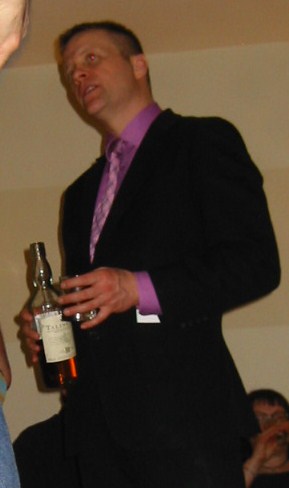This is one of the notes that got bumped when Blogger went south for two days. Christian Bök suggested on Twitter that I’d gotten some of the details wrong in my description of his Xenotext project on Tuesday, so I dropped him a noted & asked him to correct any misimpressions. Here is his reply. I’ve standardized the use of dashes & italics to fit with the blog, but the ellipses belong to Christian & nothing has been deleted.
No worries, Ron — my comment about the errors are actually quibbles (and such errors always underline for me the difficulties of explaining the project to my audience in an abbreviated, but comprehensible, manner--meaning, in effect, that I have to improve the quality of my patter...). I have done my best to update my peers about my progress on the project so that everyone has some idea about how the process works--but because most of my friends are not very immersed in the language of science, they often get a fact or two wrong when trying to rearticulate my news:
http://www.poetryfoundation.
Your blog suggests that I have actually brought the project "to fruition" in D. radiodurans-- when in fact, I have yet to complete this stage of the exercise. I have, in fact, designed my gene X-P13, and in order to make sure that it "works," I have implanted it into the genome of E. coli, a standard organism for such engineering. I have, in effect, conducted a "test-run" in order to ensure that all my projections and simulations are, in fact, correct, before actually implanting the poem into the final extremophile. I have hit a big milestone, though. I have demonstrated that, when implanted into a bacterium, my gene (which enciphers a poem) does, in fact, cause the organism to write a viable, benign protein in response -- a protein that, in turn, enciphers yet another text. I am now the first poet in literary history to have engineered a microbe to write poetry -- but I have yet to insert this mechanism into the target creature.... I have actually demonstrated the viability of my text, and the last step is now a kind of aesthetic formality.
I might note that, while your posting suggests that I have a numerous scientists working on my behalf behind the scenes, I have, in fact, done all the genetic engineering and proteomic engineering myself, designing and optimizing the gene on my own, while working out the simulations for the resultant, foldable protein, using my own academic resources. I have called upon a commercial lab to build the gene for me--(because, nowadays, obtaining a gene is as easy as ordering a pizza...) -- and the university lab has implanted the gene into the microbe for me. I have, so far, relied on the advice of two scientists, a graduate student, and a lab technician for support -- and they have all been extremely helpful. I have always emphasized that, for me, the artistic exercise requires that I, in fact, become a molecular biologist through a dilettantish, autodidactic process. I think that the scientists are impressed that, despite being a scholar in literature, I have nevertheless trained myself to be a functional biochemist.
You also suggest that such a task is not an act of "writing" so much as an act of "printing," since I simply "tell the little bugger what to say." I think that such an objection fails to comprehend the nature of the writing process required to generate these two poems. I do not tell the organism what to write--it tells me what to write. I cannot simply make it say whatever I want, since the biochemical constraints that govern the translation of the genetic sequence into a protein sequence define the parameters for my own expression. I have to respond directly to its own biology. I have to produce a viable, benign protein that is neither cytotoxic to the organism nor destroyed by the organism. I have to generate a gene sequence, optimized for implantation into the organism so that it integrates easily into such a genome. I have to come up with an encipherment for my message that can actually fulfill all these tasks, while saying something both beautiful and meaningful – both in the implanted genome *and* in the resulting protein. I am, in effect, trying to conduct a kind of dialogue between my own lingual code and the genetic code itself. I might suggest that, in this dialogue, the organism has lots of input, since I am entirely at its beck and call. I have to respond entirely to its rules. I have not written the poem – so much as I have discovered it, finding its "singular potential" among eight trillion, useless ciphers….
While a key might be required to read the poem in English, the text is not, in fact, "unreadable" – since the organism itself is supposed to be the first "reader" of my text, and the presence of its own poem, written in response to mine, is in fact detectable because it causes the organism to fluoresce red in the dark. I feel that I am trying, in effect, to spray-paint a bit of graffiti onto an enduring monument so that, even though a future reader may not comprehend the English message enciphered in it, such a reader might, nevertheless, recognize that they are, in fact, in the presence of a message, inscribed there by some recondite, but invisible, sentience....
I appreciate the interest in the project, and I hope that these comments might clarify my efforts.
Cheers and many thanks again – I'm looking forward to the next encounter,
Christian :+)






